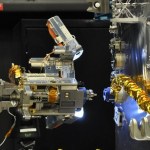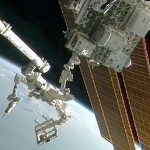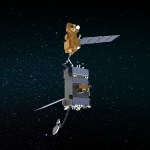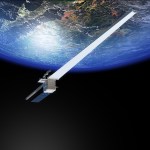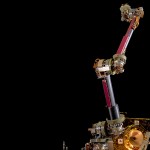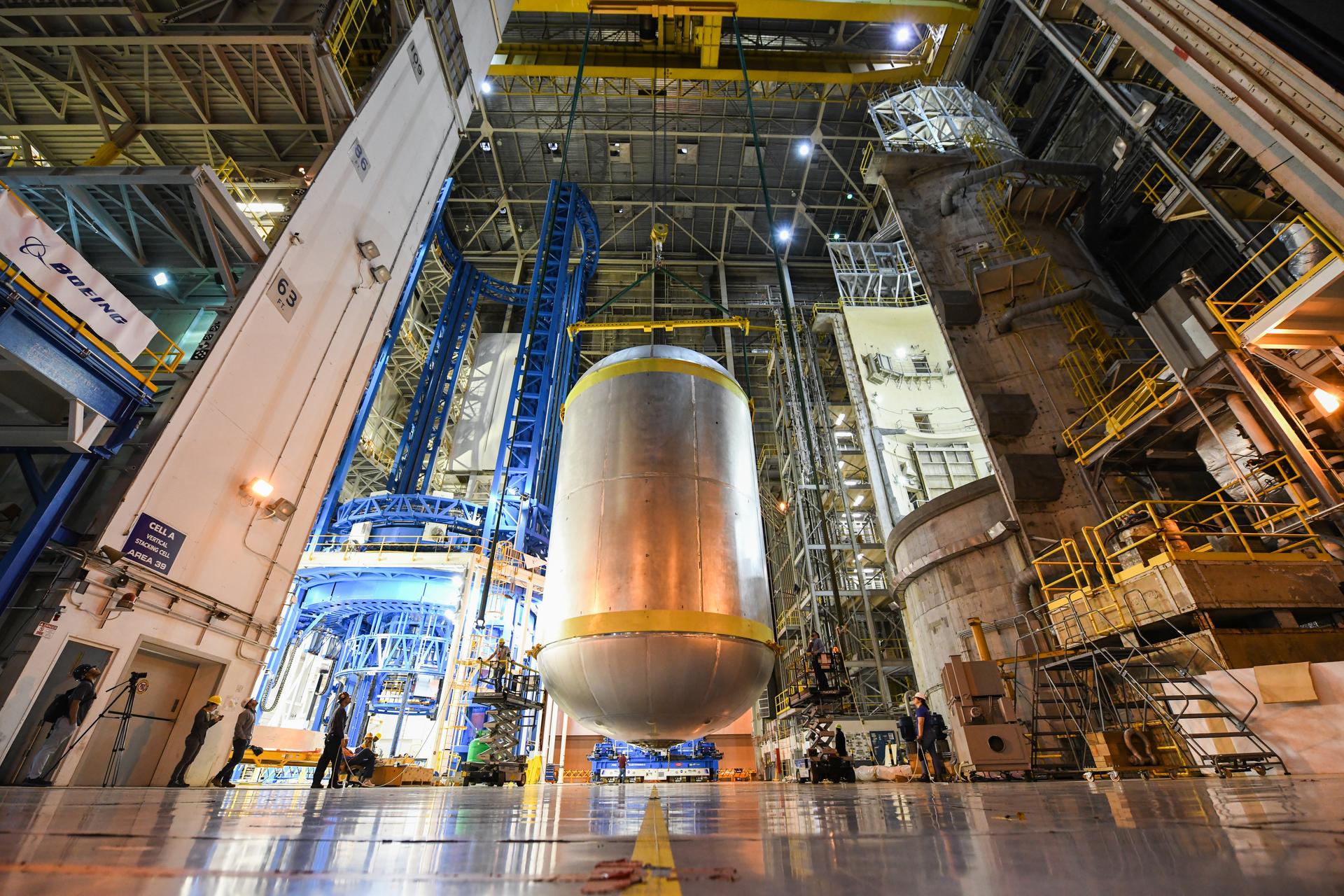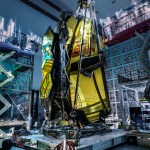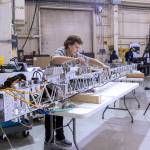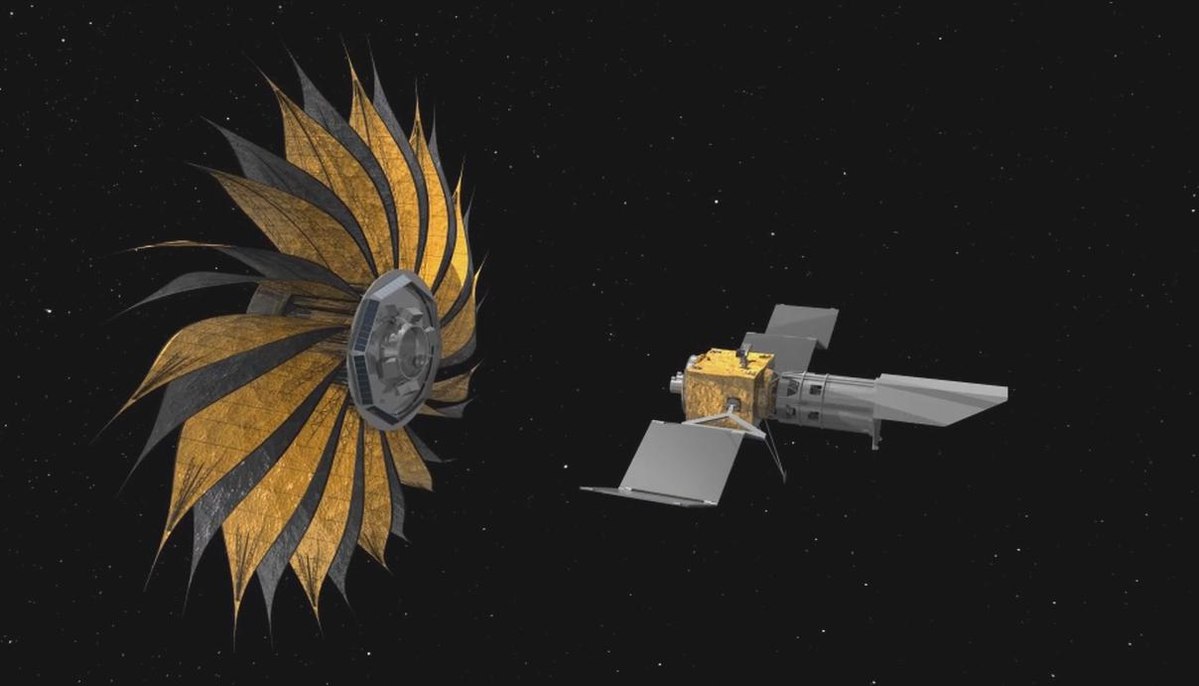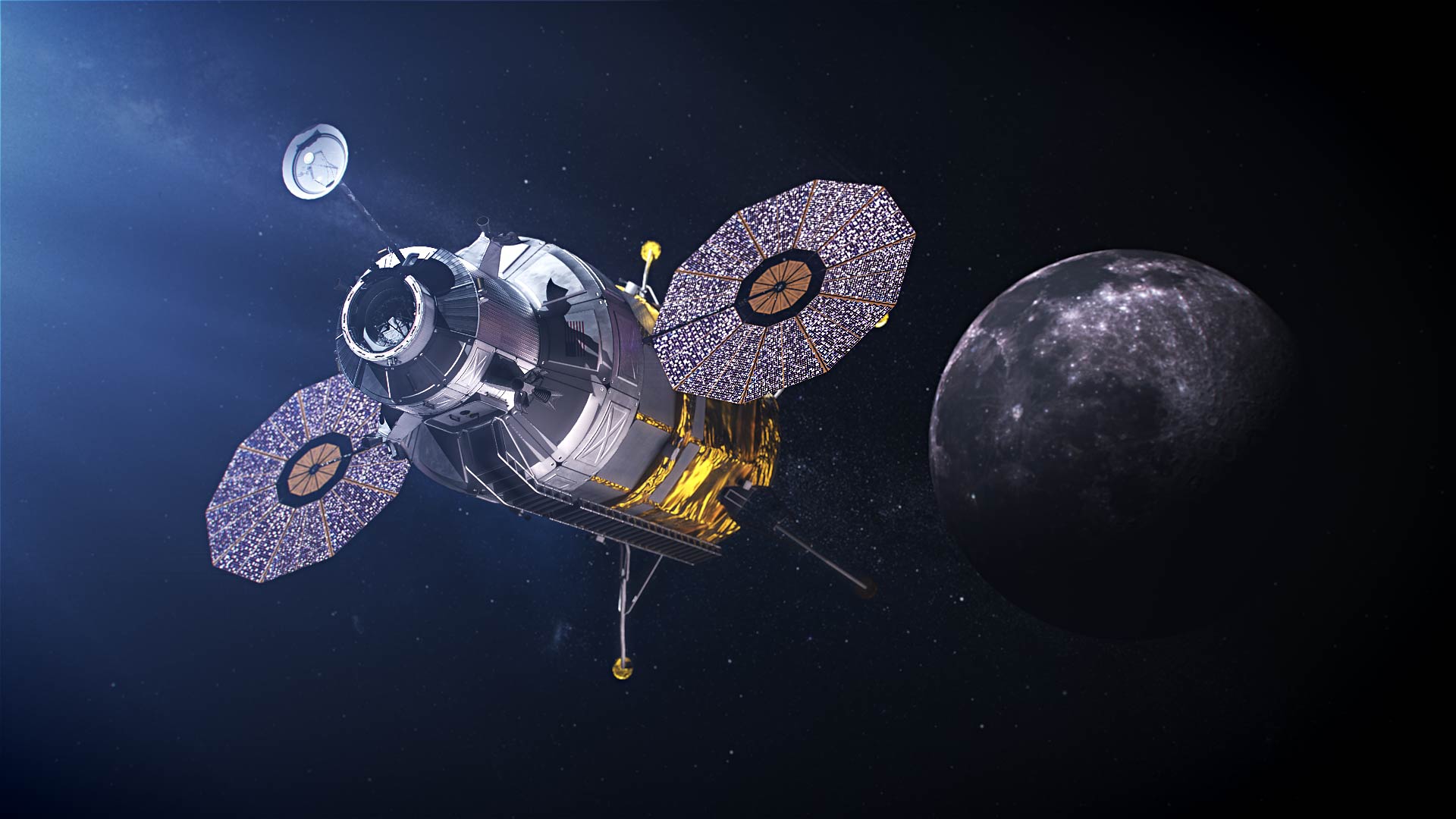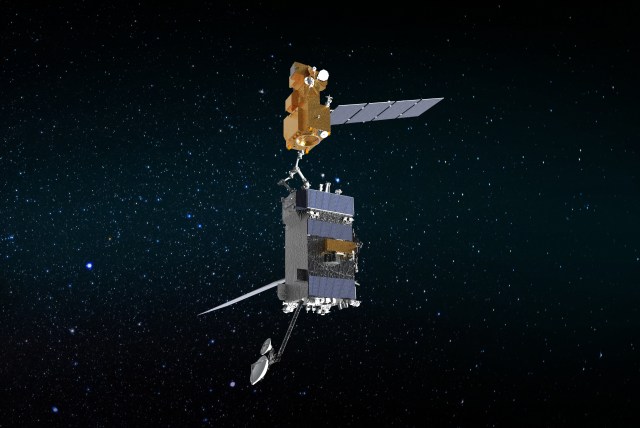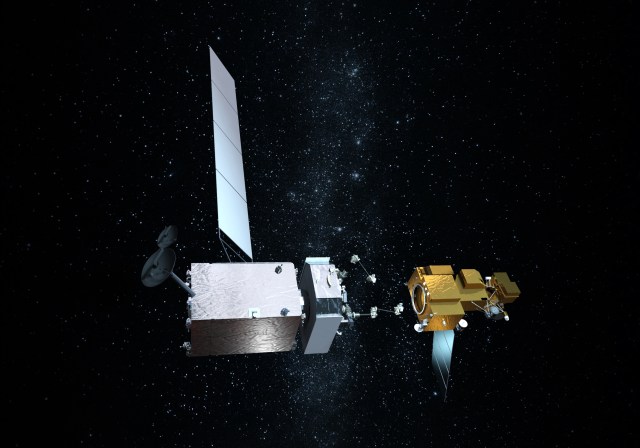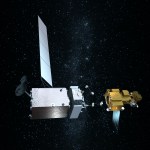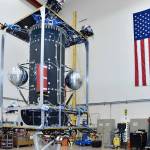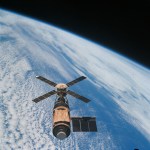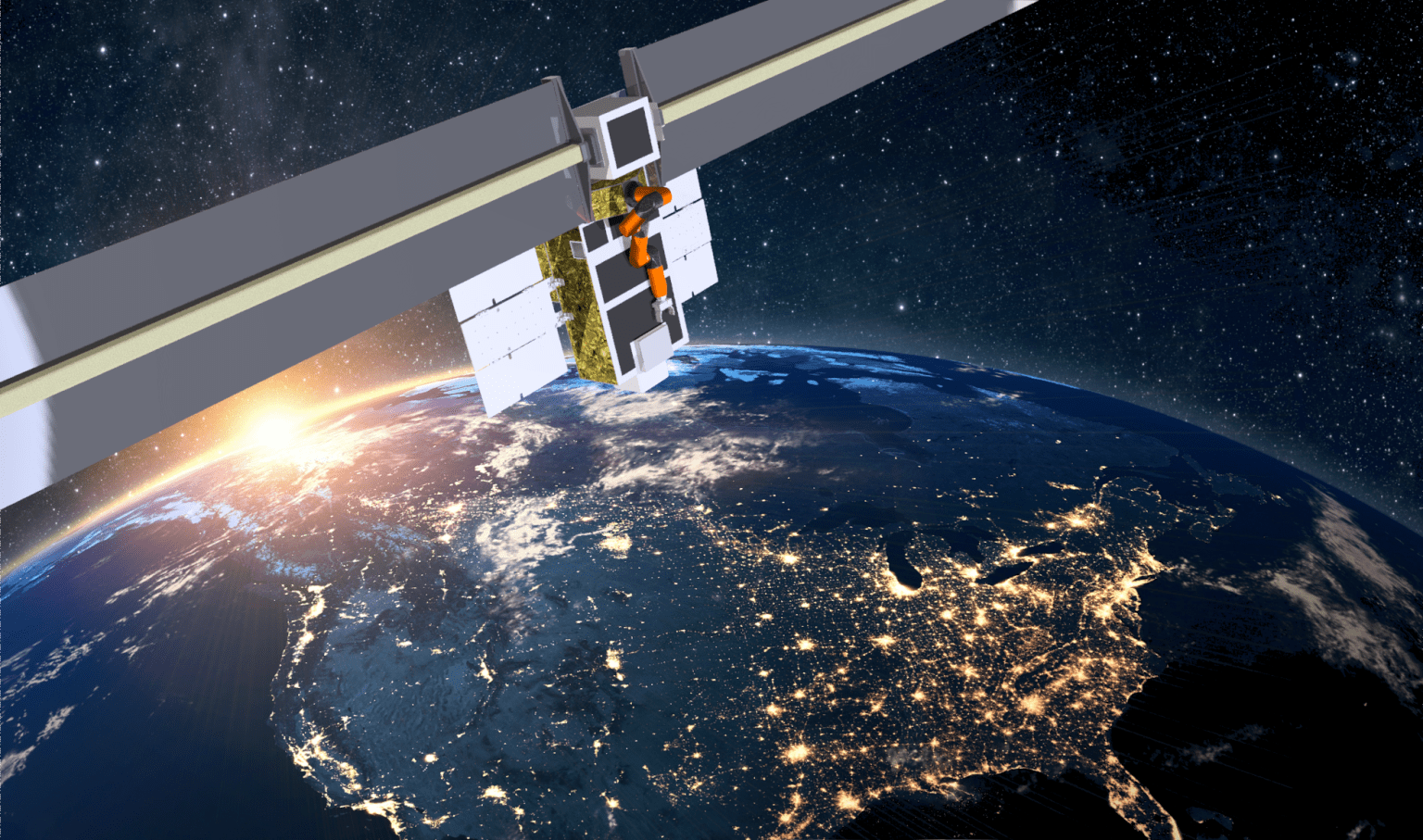
In-Space Servicing, Assembly, and Manufacturing (ISAM)
Robots are poised to make what was once thought to be impossible in space a reality.
From extending the lifespan of satellites, to assembling massive life-seeking telescopes in space, to refueling and repairing spacecraft on journeys to distant locations, the possibilities are endless. Key to these endeavors is demonstrating the foundational capabilities – servicing, assembly, and manufacturing.
Servicing
Servicing covers a wide range of activities spanning fixing, improving, and reviving satellites and refers to any work to refuel, repair, replace or augment an existing asset in space. Servicing allows for satellite life-extension and upgradability as technology evolves on Earth.
The most mature and robust of the ISAM capabilities, servicing is the conduit through which NASA will end the era of one-and-done spacecraft, which dictates satellites are designed to live their lives alone.
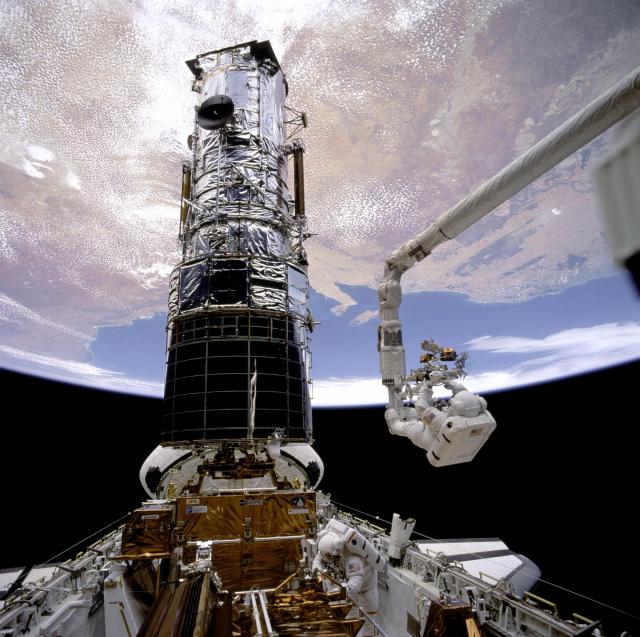
Assembly
Assembly is the practice of gathering two or more parts together in space into a single, functional aggregate structure. A suite of assembly capabilities allows us to launch individual parts to space separately and bring them together, thereby overcoming the constraints of rocket fairing volume limitations.
The ability to launch individual components of a large structure and robotically assemble them in space makes various seemingly impossible concepts possible. This capability allows for assembly of habitats in places further away than low-Earth orbit, and opens up the door for constructing large telescopes and other platforms that would otherwise be impossible.
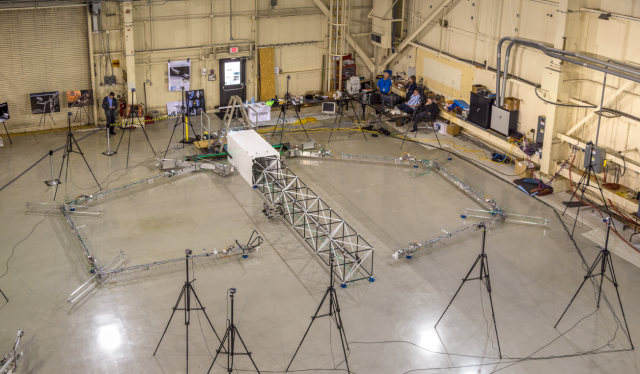
Manufacturing
Manufacturing is the fabrication of components in space as the need arises. This capability allows for greater adaptability in dealing with unforeseen challenges and has the potential to eliminate the need to launch as many components (including contingency components) upfront. It also allows for the production of unprecedented monolithic structures, such as jointless thirty-meter truss beams. On-orbit coating applications and nano-manufacturing allows for surface coatings to be applied or renewed to recover optical and thermal properties.
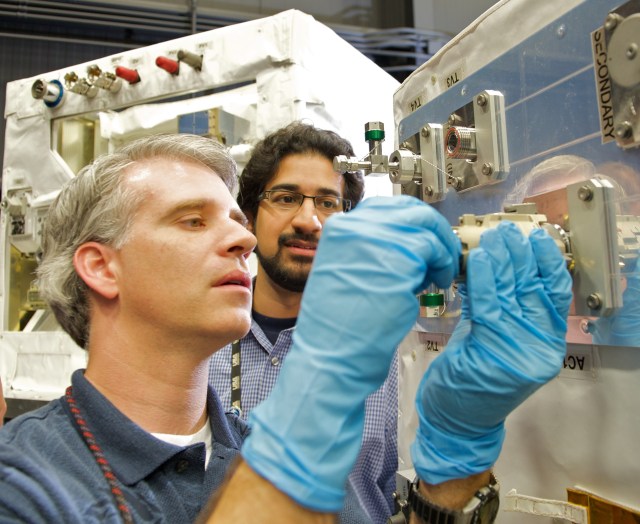
ISAM Flight Projects
ISAM Research
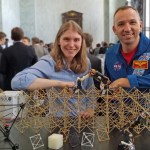
Automated Reconfigurable Mission Adaptive Digital Assembly Systems (ARMADAS)
The Automated Reconfigurable Mission Adaptive Digital Assembly Systems (ARMADAS) project is developing software and hardware that will be able to autonomously assemble materials to make a variety of functional structures such as habitat structures, large antennae arrays, and even a spaceport.<br>
Applications
Large Telescopes
Starshades are large, deployable structures that can help in the search for life on planets outside our Solar System
Being able to launch the components of a large, deep-space telescope separately and assemble them in space can break the current constraint of telescopes needing to be small enough to fit on a single launch vehicle. Technologies demonstrated by ISAM are laying the groundwork for in-space assembled observatories to peer deeper into our universe and possibly find life beyond Earth.
Starshades
Starshades are large, deployable structures that can help in the search for life on planets outside our Solar System. Earth-like planets orbiting a star are about 10 billion times fainter than their star, making them difficult to see. Starshades flown between a space telescope and a star could block out a star’s light to reveal any planets for direct imaging. Large quantities of fuel are required for continuous thrust to maintain the starshade’s proper position, so the ability to refuel is a critical aspect of concept feasibility.
Persistent Platforms
On-orbit Assembly, and Manufacturing can be used to construct truss structures in space, thereby enabling persistent orbital platforms which can be repeatedly reconfigured and renewed. Persistent platforms can efficiently host short-term technology demonstration payloads launched without dedicated spacecraft. The payloads rely on the platform for all engineering resources, including removal and disposal at the end of the demonstration, freeing up the position for the next payload.
Persistent platforms can also provide long-term hosting of complementary instrument suites that provide synergistic science from overlapping fields of view. Furthermore, unmanned persistent platforms can provide considerably better pointing knowledge and stability than the international space station (ISS), without manned safety requirements and obstructions. A robotically equipped persistent platform creates a flexible environment for adapting and reconfiguring payloads, and continuously expanding On-orbit resources.
Artemis and Sustainable Exploration
The basic formula for sustainable space exploration is: consumable replenishment and component repair (servicing), construction of large and precise structures (assembly), and creation of components from feedstock or in-situ resources (manufacturing) to break the dependence on earth supply chain logistics.
ISAM capabilities are critical to developing sustainable space architectures that allow spacecraft to live longer and journey farther, as well enabling a sustained human presence in space. Robotic ISAM technologies facilitate the replenishment of supplies that run out from spacecraft fuel, to coolant, to oxygen. They can help in ensuring the longevity and operability of spacecraft and life support systems with unplanned repair and planned maintenance.
ISAM State of Play
The ISAM State of Play document is a survey of past, present, and near future ISAM capabilities across industry and government agencies. It was produced to promote awareness of the breadth of ISAM investments and developments within the aerospace community, with the hope of fostering dialog, partnerships, and innovation. The ISAM State of Play can inform architecture studies, mission formulation, and pathfinding options to establish an economic ISAM ecosystem.
The 2023 ISAM State of Play is the third release of the document and provides significant updates, including the addition of 26 new ISAM technologies, 50 ISAM-related facilities, and 88 ISAM developers. Best efforts are made to incorporate all pertinent information. Comments, corrections, or additions are encouraged to ensure the current state-of-the-art is properly captured. Any recommendations will be assessed and incorporated into future editions of the ISAM State of Play, which are scheduled to be released on a yearly cadence. Feedback for the ISAM State of Play can be provided to the authors through email.
View the ISAM State of Play document (PDF)
ISAM Technology Catalog
NASA’s Technology Transfer Program ensures that innovations developed for exploration and discovery are broadly available to the public, maximizing the benefit to the Nation. Whether you’re looking to start a new company, enhance an existing product, or create a new product line, you can gain a competitive edge in the marketplace by putting NASA technology to work for you.
The ISAM Technology Catalog provides domestic companies with insight and access to technology NASA has developed in support of spaceflight missions, technology demonstration, or in pursuit of concept development. By transferring technology as it is developed rather than only after it has been demonstrated in orbit, NASA expedites new capabilities into the commercial market and promotes U.S. global leadership in ISAM capability. Organizations interested in commercializing ISAM technologies are invited to contact the points of contact listed in the catalog to discuss how they can be adapted for other spaceflight and surface applications.
The full version of the ISAM Technology Catalog is available to domestic companies by contacting Patty Manalansan at NASA Goddard Space Flight Center, which controls the release of the catalog. An NDA is required as the catalog contains export controlled technical data.
Workshops and Events
Beginning in 2016, NASA’s Space Technology Mission Directorate has hosted yearly opportunities for industry, academia, and other government agencies to share critical developments in ISAM. These events seek to spark collaboration between domestic groups dedicated to ISAM technologies and develop a shared vision for the future of ISAM services.
Information about recent ISAM workshops may be found below, followed by a calendar of other relevant events. Information about future workshops will be posted here when available.
"Exploring the Power of Collaboration"
Hosted by COSMIC Consortium for Space Mobility and ISAM Capabilities (CoSMIC) will host its kickoff meeting, “Exploring the Power of Collaboration,” on November 7-8, 2023. At this workshop, NASA ISAM experts will be available to discuss technology transfer opportunities for companies interested in ISAM innovation and NASA’s ISAM Technology Catalog.
Register for the Workshop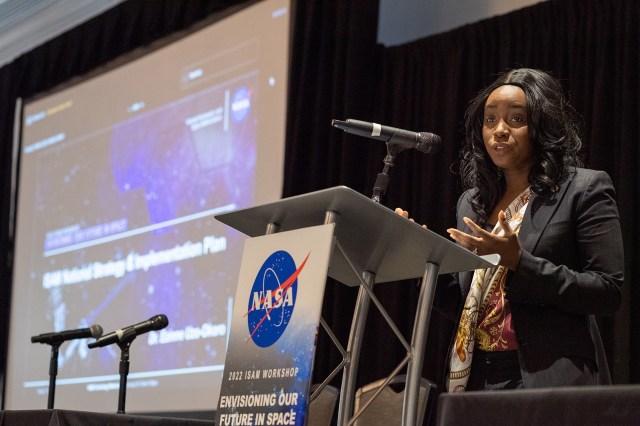
Past Workshops
- 2022: Envisioning Our Future In Space
- 2021: Technologies, Partnerships, and Opportunities Enabling Space Infrastructure
- 2020: Journeying Longer and Seeing Farther
2024 Calendar
Jan 8-12
American Institute of Aeronautics and Astronautics (AIAA) Science and Technology Forum (SciTech) @ Hyatt Regency in Orlando, FL
Jan 30-Feb 1
SpaceCom 50th Space Congress and the USSF Space Mobility Conference @ Orange County Convention Center in Orlando, FL
Feb 1-7
46th American Astronautical Society (AAS) Guidance, Navigation & Control Conference @ Beaver Run Conference Center, Breckenridge, CO
Feb 6-8
SmallSat Symposium @ Computer History Museum, Mountain View, CA
Feb 14-15
American Institute of Aeronautics and Astronautics (AIAA) Accelerating Space Commerce, Exploration, and New Discovery (ASCENDxTexas) @ South Shore Harbour Resort and Conference Center in League City, Texas
Feb 21-22
26th FAA Commercial Space Transportation Conference @ Ronald Reagan Building, Washington DC
Feb 22
Consortium for Execution of Rendezvous and Servicing Operations (CONFERS) Webinar for Voluntary Space Sustainability Ratings (virtual)
Feb 27-28
International Academy of Astronautics (IAA) 10th Space Traffic Management Conference (STMC 2024) @ University of Texas in Austin, Texas
Mar 2-4
Institute of Electrical and Electronics Engineers (IEEE) Aerospace Conference @ Yellowstone Conference Center in Big Sky, MT
Mar 18-21
Satellite 2024 Conference @ Walter E. Washington Convention Center in Washington, DC
Mar 21-22
International Academy of Astronautics (IAA) 1st Moon Farside Protection Symposium (MFP 2024) in Turin, Italy
Apr 8-11
Space Foundation 39th Space Symposium @ The Broadmoor in Colorado Springs, CO
Apr 22-24
5th International Conference on Artificial Intelligence, Robotics and Control (AIRC 2024) @ British University in Cairo, Egypt
Apr 23-25
CubeSat Developers Workshop @ California Polytechnic State University in San Luis Obispo, CA
Apr 30-May 2
Inter-Planetary Small Satellite Conference @ University of Arizona in Tucson, Arizona
May 8-10
International Academy of Astronautics (IAA) 4th Conference on Space Situational Awareness (ICSSA 2024) @ Embry-Riddle Aeronautical University (ERAU) in Daytona Beach, FL
May 13-15
Space Tech Expo @ Long Beach Convention Centre, Long Beach, CA
May 13-17
Institute of Electrical and Electronics Engineers (IEEE) International Conference on Robotics and Animation (ICRA 2024) @ Pacific Convention Plaza in Yokohama, Japan
May 14
Rendezvous Proximity Operations (RPO) Workshop @ Utah State University Space Dynamics Laboratory (SDL) in North Logan, UT
May 15-16
Consortium for Space Mobility and In-space Servicing Assembly and Manufacturing (ISAM) Capabilities (COSMIC) Workshop @ Utah State University Space Dynamics Laboratory (SDL) in North Logan, UT
May 27-31
Small Satellites Systems and Services Symposium (4S Symposium) @ Palma Convention Centre in Palma de Mallorca, Spain
Jun 17-21
17th Spacecraft Charging and Technology Conference (SCTC 2024) @ Place du Palais in Avignon, France
Jul 30-Aug 1
American Institute of Aeronautics and Astronautics (AIAA) Accelerating Space Commerce, Exploration, and New Discovery (ASCEND) @ Caesars Forum, Las Vegas, NV
Jul 11-12
Secure World Foundation 6th Summit for Space Sustainability @ National Museum of Emerging Science and Innovation in Tokyo, Japan
Jul 13-21
Committee on Space Research (COSPAR 2024) 45th Scientific Assembly @ Busan Exhibition and Convention Center (BEXCO) in Busan, South Korea
Aug 3-8
Small Satellite Conference @ Utah State University in North Logan, UT
Aug 26-28
2nd International Summit on Robotics and Artificial Intelligence (ISRAI 2024) in Valencia, Spain
Aug 28-Sep 1
Institute of Electrical and Electronics Engineers (IEEE) International Conference on Automation Science and Engineering (CASE 2024) @ Nicolas Hotel in in Bari, Italy
Oct 14-18
Institute of Electrical and Electronics Engineers (IEEE) and Robotics Society of Japan (RSJ) International Conference on Intelligent Robots and Systems (IROS 2024) @ Abu Dhabi National Exhibition Centre (ADNEC) in Al Ma’arid, Abu Dhabi, United Arab Emirates
Oct 14-18
International Astronautical Congress (IAC 2024) @ MiCo Convention Centre in in Milan, Italy
Oct 21-22
Satellite Innovation @ Computer History Museum in Mountain View, CA
Oct 23-24
MilSat Symposium @ Computer History Museum in Mountain View, CA
Nov 13-14
Consortium For Execution of Rendezvous and Servicing Operations (CONFERS) 7th Annual Global Satellite Servicing Forum & Exhibition (GSSF&E) @ The Westin Arlington Gateway, Arlington, VA




























